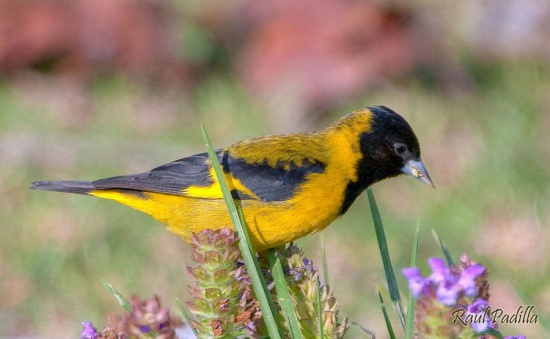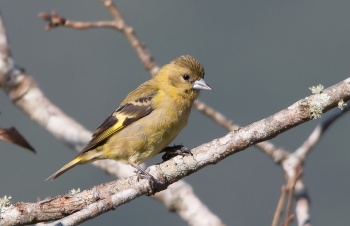- Spinus notatus
Carduelis notata
Identification
10–12 cm (4-4¾ in)
Male
- Black head and chest
- Black shoulders
- Golden yellow upperparts and underparts
- Bright yellow wing bars
Female - similar to male but lacks the black chest.
Distribution
North and Central America
North America: Texas
Central America: Mexico, Guatemala, Belize, El Salvador, Honduras, Nicaragua
Taxonomy
Subspecies
There are 3 subspecies[1]:
- S. n. notata:
- S. n. forreri:
- Oak-pine belt of western Mexico (southern Sonora and Chihuahua to Guerrero)
- S. n. oleacea:
Formerly placed in the genus Carduelis.
Habitat
Lower and submontane forests between 2000-3000m. Agricultural, woodland and gardens.
Behaviour
Diet
They forage on the ground, cling to plant stems, and in trees searching for a variety of plant and pine seeds.
Breeding
There is little information available. Their breeding season runs from May to July and they lay 2 eggs.
References
- Clements, J. F., T. S. Schulenberg, M. J. Iliff, D. Roberson, T. A. Fredericks, B. L. Sullivan, and C. L. Wood. 2016. The eBird/Clements checklist of birds of the world: v2016, with updates to August 2016. Downloaded from http://www.birds.cornell.edu/clementschecklist/download/
- Avibase
- BF Member observations
- Handbook of the Birds of the World Alive (retrieved February 2017)
Recommended Citation
- BirdForum Opus contributors. (2025) Black-headed Siskin. In: BirdForum, the forum for wild birds and birding. Retrieved 16 May 2025 from https://www.birdforum.net/opus/Black-headed_Siskin
External Links
Search the Gallery using the scientific name:
Search the Gallery Using the common name:
GSearch checked for 2020 platform.





